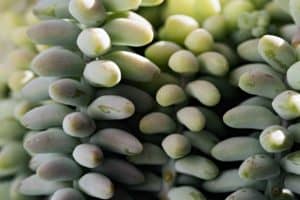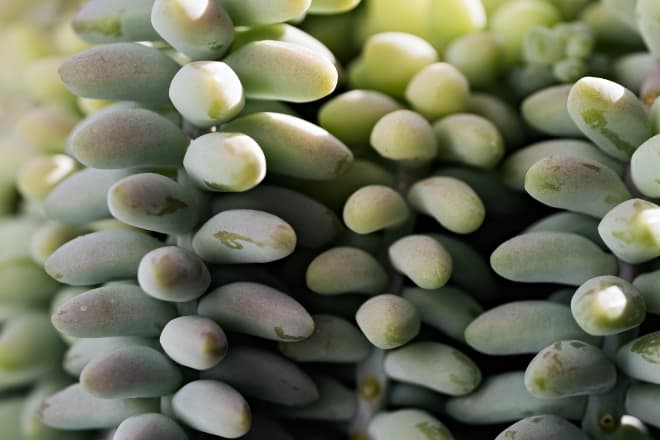
via: Pexels / Karolina Grabowska
A flowering plant from the southern hemisphere, Sedum morganianum can make a beautiful addition to your succulent garden. Better known as Burro's Tail, this increasingly popular house plant is often cultivated in hanging containers where its long trailing stems will hang vertically.
Whether indoors or outdoors, learning how to care for succulents will ensure that you continue to enjoy their beautiful looks and the green environment they create.
In this guide, you'll learn everything you need to know to care for your Burro's Tail, from what type of soil it needs to, how much water it can handle, as well as how to propagate sedum morganianum from cuttings. By the end of this article, you'll be fully prepared to take care of not just this succulent, but many others as well!
What is a sedum morganianum?
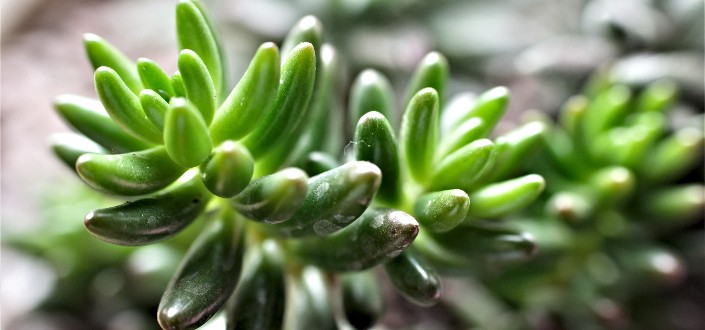
via: Pixabay / photostockeditor
Commonly known as a Burro's Tail Cactus, sedum morganianum is technically not a cactus, but a succulent. Native to Mexico and Honduras, it is a heat- and humidity-loving plant that is easy to cultivate indoors and requires minimal maintenance. It is named for its resemblance to the end of a donkey's tail.
A fun fact about Burro's Tail: It grows so well indoors that the Royal Horticultural Society, Britain's most prestigious gardening organization, has given it the Award of Garden Merit! This means that it's a plant that's easy to grow indoors, as well as an aesthetically pleasing addition to almost any home.
Why is Knowing How To Grow Burro's Tail (sedum morganianum) Important?

via: Pexels / Sora Shimazaki
If you've ever tried growing plants at home, but found them to be too much work -- watering too frequently, requiring too many special soil amendments, or having overly specific light preferences -- then growing a succulent like sedum morganianum may be an excellent alternative.
Once you learn how to grow this low-maintenance succulent, you'll be rewarded with year-round greenery in your home or apartment. And all of this without complicated watering schedules or overly delicate leaves!
How To Grow Burro's Tail (sedum morganianum)
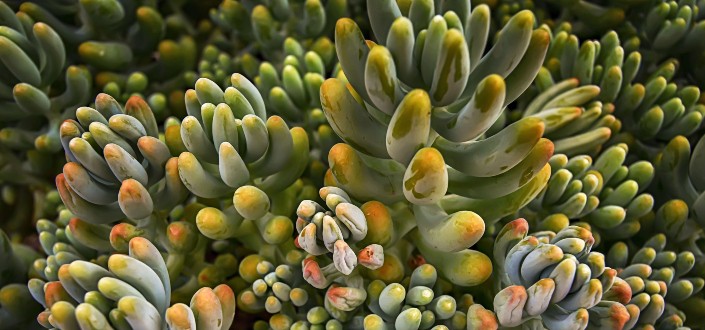
via: Pixabay / Angeleses
Are you ready to learn how to grow your Burro's Tail? In this step-by-step explanation, you'll receive a foolproof method to set yourself up for success with sedum morganianum. Follow along and you'll learn everything you need to know to successfully grow Burro's Tail in your home.
1. Identify which type of succulent you're working with
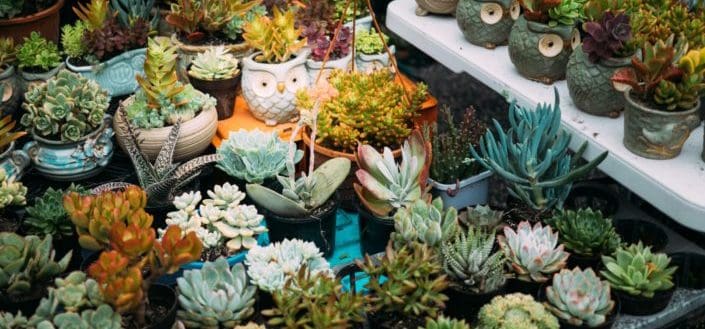
via: Unsplash / Tim Bennett
The world of succulents is as broad as any other area of the plant kingdom, with dozens of major types of succulents. So before you get started buying, preparing for, and planting your sedum morganianum, you'll need to identify exactly which type of succulent it is!
Burro's Tail is a perennial, flowering succulent that requires temperatures of at least 45 degrees Fahrenheit to survive and thrive. This is a big part of what makes it one of the most popular indoor succulents, It does best with the warm, humid temperatures that you'll find in most homes and apartments.
Furthermore, sedum morganianum is a trailing succulent, meaning that it will produce replicating stems from a central base. This makes it an excellent choice for cultivating in a hanging planter, as the trailing stems will drape gorgeously as it grows.
2. Choose the Right Soil for Burro's Tail
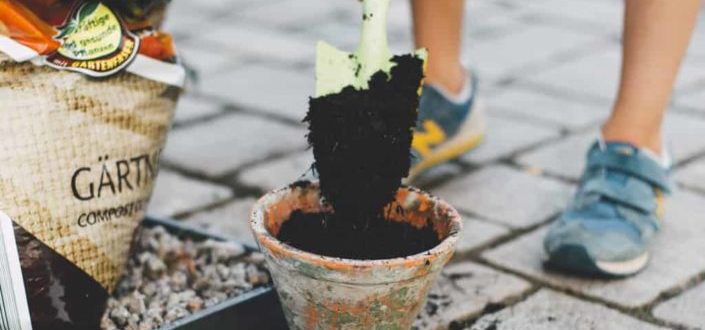
via: Pexels / Markus Spiske
Like most succulents, Burro's Tail requires soil that drains easily in order to thrive and be propagated. It's best to get a soil that's made specifically for succulents and cacti, but if that's not available you can mix horticultural grade sand and perlite with regular potting soil.
Whatever you do, don't plant Burro's Tail in the same potting soil you would use for flowers. Because sedum morganianum is drought tolerant, its roots can't handle being submersed in water -- and planting it in regular potting soil will almost surely kill it.
3. Learn How To Water your Burro's Tail

via: Unsplash / David Ballew
Learning how to water succulents is one of the easiest activities around. Why? Because you barely have to do it at all, that's why!
Most succulents, Burro's Tail included, have evolved to withstand long periods of drought with almost complete lack of access to water. Be sure to plant your Burro's Tail in a container with drainage holes at the bottom, and plan on watering once every 2 to 4 weeks.
When you water, it's best to spray a bit of water on the body of your Burro's Tail as well as the soil. Add water just until it's damp to the touch, and let the soil dry out completely in between watering.
4. Know How To Propagate Burro's Tail
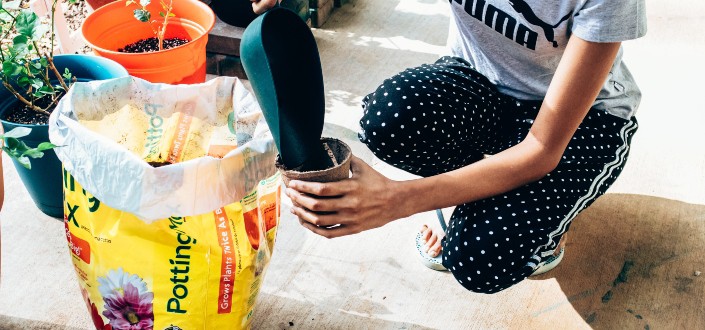
via: Pexels / PrathSnap
If you already know how to propagate succulents, you'll find it extremely easy to propagate Burro's Tail. It's one of the simplest succulents to propagate, and a great one to share with friends.
Stem or leaf cuttings will work for propagation of sedum morganianum, and the delicate leaf connections will often break off with even the slightest pressure. Once separated from the mother plant, the leaves will survive for nearly a week -- look for roots in 2 to 3 days, and you can replant directly from there.
If you're having trouble getting your Burro's Tail leaves to sprout roots, try keeping them in your bathroom. The added heat and humidity from showers and baths will prompt them to send out more rootlets, and make it easier to propagate in the long run.
More Awesome Succulents
There's definitely more easy to grow succulents where Burro's Tail came from! Check out these other mini guides to some of the most popular indoor succulents available today:
- Want to give a succulent on Valentine's Day? Check this, how to grow rose succulents or Greenovia dodrentalis.
- Ever wondered where tequila comes from? Check out the Agave blue glow succulent page for the inside scoop on this fascinating plant!
- Great for sunburns, read on how to grow and care for lace aloe or Aloe aristata. This succulent is popular remedy in traditional herbal medicine -- and surprisingly easy to grow at home!
In Conclusion
Follow the steps listed above, and you should have no problem at all growing Sedum morganianum in your own home! Burro's Tail is an excellent succulent for beginners to try growing indoors, and a beautiful option for including in a hanging display. Learn how to care for succulents, and you'll always have a splash of green in your home!


